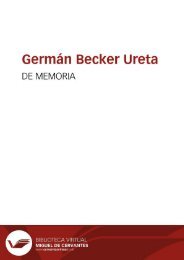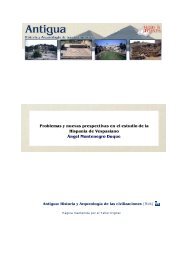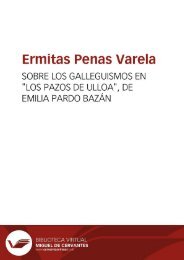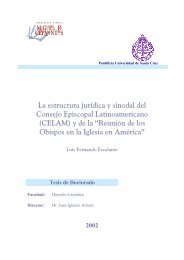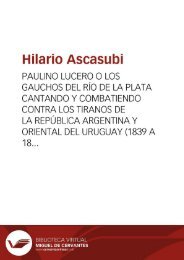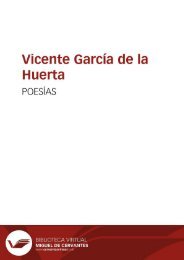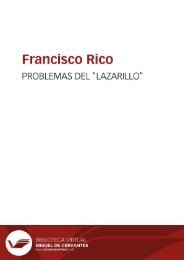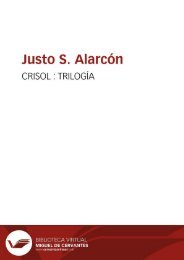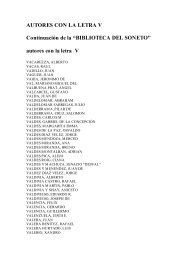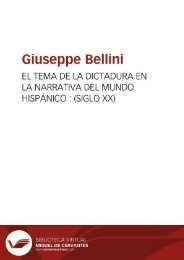You also want an ePaper? Increase the reach of your titles
YUMPU automatically turns print PDFs into web optimized ePapers that Google loves.
Anales galdosianos [Publicaciones periódicas]. Año XII, 1977<br />
El hombre de pensamiento descubre la verdad; pero quien goza de ella y utiliza sus celestiales dones<br />
es el hombre de acción, el hombre de mundo, que vive en las particularidades, en las contingencias<br />
y en el ajetreo de los hechos comunes.<br />
(XXXIX, 245-46)<br />
Which of the two plucks more enjoyment from life is clear, but if the formula is valid, it is also<br />
clear whose contribution is the greater. Manso plainly affirms the power of the creative spirit: «<br />
Desde su oscuro retiro, el sacerdote de la razón, privado de los encantos de la vida y de la juventud,<br />
lo gobierna todo con fuerza secreta. La conciencia es creadora, atemperante y reparadora. Si se la<br />
compara a un árbol, debe decirse que da flores preciosísimas, cuya fragancia trasciende a todo lo<br />
exterior » (XXXIX, 246). These words, like all of El amigo Manso , need to be read simultaneously<br />
with their opposing connotations: as a rationalization that turns Máximo into the object of irony and<br />
as a serious evaluation of the cerebral being's creative function. The thinker, the philosopher, the artist<br />
gives life, invents the existence of others. The reason for his being is the existence of those he has<br />
created. The philosopher and the artist create so that others might understand and enjoy. The objects -<br />
ideas, fictions, characters- through which these others gain understanding and joy then exist alone for<br />
the reader or perceiver, autonomously, while their creator, essential though his role has been, fades<br />
from existence.<br />
When Manso feels his spirit suffused with Irene's, the sentiment causes him to say that everything<br />
appeared beautiful and gratifying to him, like a projection of himself. The wonder of creative<br />
inspiration, here the encapsulation of an ideal, confers upon the artist the power to transfigure reality<br />
while reality appears transfigured in his eyes. Nothing is what it is and everything transcends what it<br />
is. The artistic imagination not only improves on reality, but gives birth to a new circumstance. When<br />
Manso from his vantage point in limbo talks of the earthly « desgraciadas figurillas » disdainfully as<br />
playthings that entertained man in his childish state, he is, among other things, seeing them -« ¡Pobre<br />
gente! » -from the creator's perspective as insignificant objects designed for a moment's distraction.<br />
Supremely powerful, he conjures them at will as <strong>Galdós</strong> conjured him. 156<br />
If the artist as creator sits with God and with Nature in his possession of a singular authority, his<br />
invention -both the fiction as such and the fictive creature- wins uncommon prominence. The creator<br />
may berate his creations in their symbolic state as mortals, but the autonomy device allows neither<br />
the reader nor the creator to forget that the mortality of the fictional creation is not nearly so fragile<br />
156 Cf. Infante's final words to Equis in La incógnita (V, 786).<br />
114



